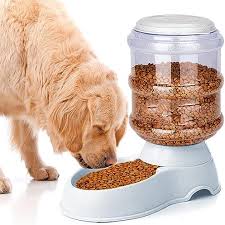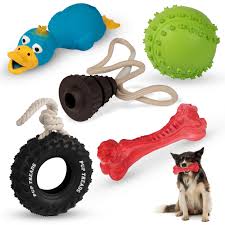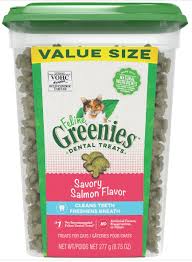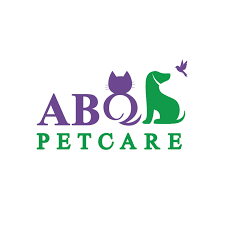The Importance of Choosing the Right Dog Feeder
As a responsible dog owner, providing your furry friend with the right nutrition is crucial for their overall health and well-being. One often overlooked aspect of a dog’s feeding routine is the type of feeder used. The right dog feeder can make a significant difference in your dog’s mealtime experience and even their digestion.
Benefits of Using a Proper Dog Feeder:
- Portion Control: Many dog feeders come with portion control features that help you regulate your dog’s food intake, preventing overeating and obesity.
- Slow Feeding: Slow feeders are designed to reduce the speed at which your dog eats, promoting better digestion and preventing issues like bloating or vomiting.
- Elevated Feeders: Elevated feeders can be beneficial for larger dogs or those with joint issues, as they promote better posture during meals and reduce strain on neck and back muscles.
- Easy Cleaning: Some dog feeders are designed for easy cleaning, making mealtime maintenance a breeze and reducing the risk of bacterial growth.
- Mental Stimulation: Interactive feeders or puzzle feeders can provide mental stimulation for your dog during mealtime, keeping them engaged and entertained.
Choosing the Right Dog Feeder:
When selecting a dog feeder for your furry companion, consider factors such as their size, eating habits, and any specific health concerns they may have. Consult with your veterinarian if you’re unsure about which type of feeder would be best suited for your dog’s needs.
Investing in a high-quality dog feeder is an investment in your pet’s health and happiness. By choosing the right feeder, you can ensure that your canine companion enjoys their meals to the fullest while maintaining optimal health.
8 Essential Tips for Choosing the Perfect Dog Feeder
- Choose a dog feeder that is the right size for your dog’s breed and size.
- Opt for a feeder that is made of high-quality, non-toxic materials.
- Consider the height of the feeder to ensure comfortable eating position for your dog.
- Look for feeders that are easy to clean to maintain good hygiene.
- Use a slow feeder if your dog tends to eat too quickly to prevent digestive issues.
- Monitor your dog’s feeding habits and adjust portion sizes accordingly.
- Rotate different types of feeders to keep mealtime engaging for your dog.
- Consult with a veterinarian if you have concerns about your dog’s feeding behavior or dietary needs.
Choose a dog feeder that is the right size for your dog’s breed and size.
When selecting a dog feeder, it is essential to choose one that is the right size for your dog’s breed and size. Different breeds have varying feeding habits and requirements, so opting for a feeder that is appropriate for your dog’s specific needs can promote healthier eating habits and overall well-being. A feeder that is too small may cause discomfort or frustration for larger breeds, while a feeder that is too large could lead to overeating for smaller dogs. By selecting a dog feeder that matches your furry friend’s breed and size, you can ensure they have a comfortable and enjoyable mealtime experience.
Opt for a feeder that is made of high-quality, non-toxic materials.
When selecting a dog feeder, it is essential to opt for one made of high-quality, non-toxic materials. This choice ensures the safety and well-being of your furry friend during mealtime. High-quality materials are durable and less likely to leach harmful substances into your dog’s food. By prioritizing non-toxic options, you can provide a healthy feeding environment for your canine companion and minimize the risk of potential health issues associated with low-quality materials.
Consider the height of the feeder to ensure comfortable eating position for your dog.
When selecting a dog feeder, it is essential to consider the height of the feeder to guarantee a comfortable eating position for your furry friend. Ensuring that your dog’s feeder is at the appropriate height can help prevent neck strain and promote better posture during meals. By choosing a feeder that allows your dog to eat comfortably without having to strain or bend awkwardly, you can contribute to their overall well-being and enjoyment of mealtime.
Look for feeders that are easy to clean to maintain good hygiene.
When selecting a dog feeder, it is essential to look for options that are easy to clean to uphold good hygiene standards. Easy-to-clean feeders not only make mealtime maintenance more convenient but also help prevent the buildup of bacteria that could potentially harm your dog’s health. Regular cleaning of the feeder ensures a safe and hygienic feeding environment for your furry friend, promoting their overall well-being and enjoyment during mealtime.
Use a slow feeder if your dog tends to eat too quickly to prevent digestive issues.
Using a slow feeder can be a beneficial solution if your dog has a tendency to eat too quickly. These specialized feeders are designed to slow down your dog’s eating pace, promoting better digestion and reducing the risk of digestive issues such as bloating or vomiting. By incorporating a slow feeder into your dog’s mealtime routine, you can help them develop healthier eating habits and improve their overall well-being.
Monitor your dog’s feeding habits and adjust portion sizes accordingly.
Monitoring your dog’s feeding habits is essential for maintaining their health and weight. By observing how much your dog eats and how quickly they consume their food, you can adjust portion sizes accordingly to prevent overeating or underfeeding. Paying attention to your dog’s feeding behavior allows you to tailor their meals to meet their specific needs, ensuring they receive the right amount of nutrition for optimal well-being. Regularly assessing and adjusting portion sizes based on your dog’s individual requirements is a proactive approach to promoting a healthy diet and lifestyle for your furry companion.
Rotate different types of feeders to keep mealtime engaging for your dog.
To keep mealtime engaging for your dog, consider rotating different types of feeders. By introducing variety in how your dog receives their food, you can add an element of excitement and mental stimulation to their feeding routine. Switching between slow feeders, puzzle feeders, and traditional bowls can keep your dog’s interest piqued and prevent mealtime from becoming monotonous. This simple tip not only makes feeding time more enjoyable for your furry friend but also provides them with a fun challenge that engages their mind during meals.
Consult with a veterinarian if you have concerns about your dog’s feeding behavior or dietary needs.
It is essential to consult with a veterinarian if you have concerns about your dog’s feeding behavior or dietary needs. Veterinarians are trained professionals who can provide valuable insights and recommendations tailored to your dog’s specific health requirements. By seeking their guidance, you can ensure that your furry friend receives the appropriate nutrition and feeding regimen to support their overall well-being.




